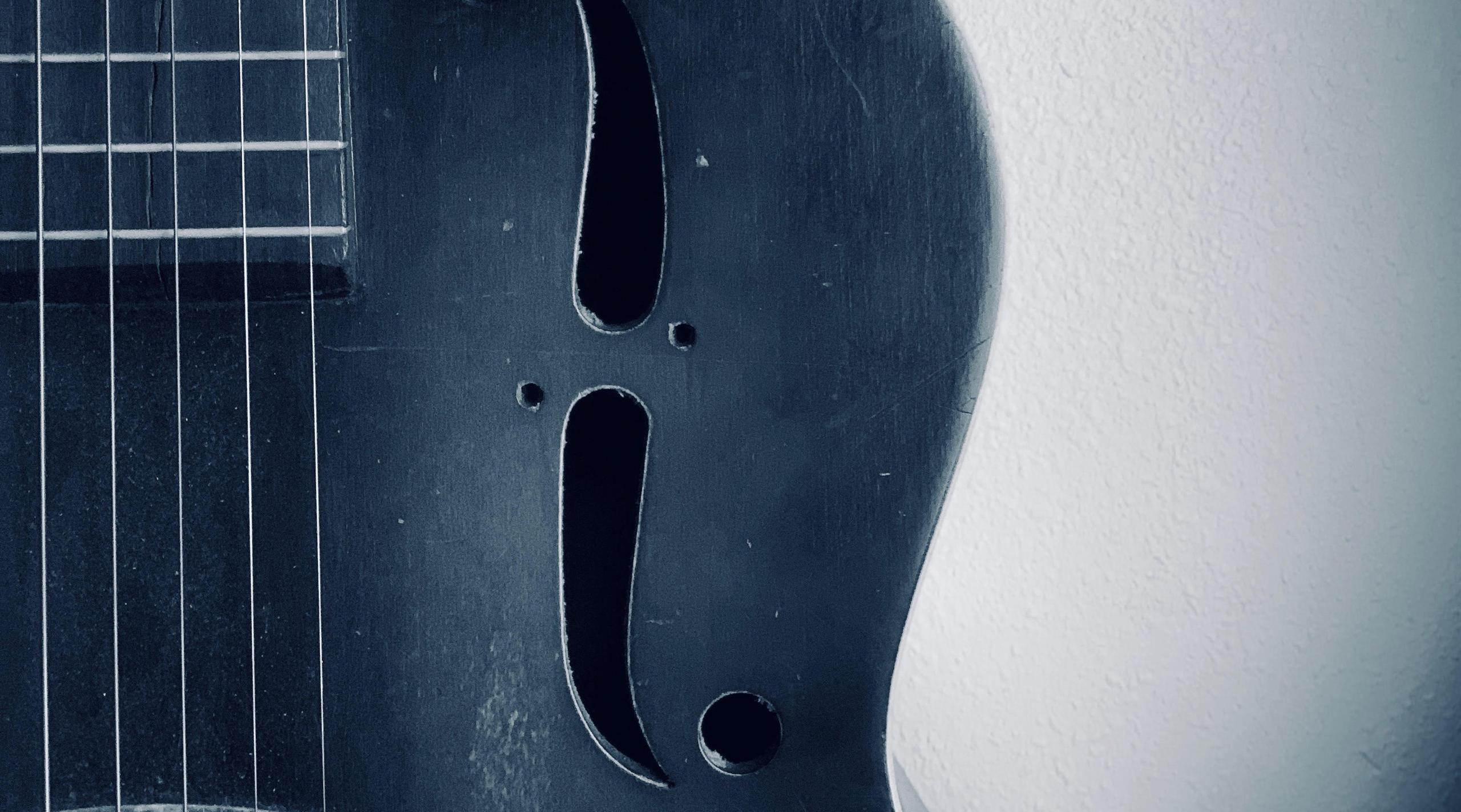Learn to play your first chorus of steady-bass blues!
Start with techniques for a solid groove, add blues licks, chord voicings and turnarounds, and learn how to put it all together and make your own variations.


The Blues Dilemma
Blues instruction often takes place at one of two extremes. For some people, it’s entirely about the vibe, and they present it that way: “Here’s what I’m doing. You just have to feel it!” Then there’s the nuance school of thought. For these folks, every record is a sacred text, and if you don’t learn each scrape and stutter and slur just like it was done in 1936, you’re wasting your time.
The first approach glosses over the necessary mechanics, assuming you’ll work out right-hand coordination and left-hand fingerings on your own. The second way places so much emphasis on the details, it feels impossible you could ever play the music completely “right.” Niether approach really addresses the main reason people show up for lessons: “I like this music, and I’d like to be able to play a few things in this style.”
Short interlude for hellhounds and turntable
I had very little access to recordings of prewar blues when I was learning to play, and by the time I did, I was too scarred by my failure to conquer Sor studies and lute suites to take on any more perfectionist challenges. Instead, I listened to folk-revival pickers like Dave Van Ronk, Ry Cooder and Jorma Kaukonen, and, finding their playing more regular and their recordings literally easier to hear than those of Gary Davis, Blind Willie Johnson & Co., I set about trying to make something of a vocabulary and repertoire out of their best instrumental moments.
At the time, I wasn’t much into singing, and I couldn’t have sung those country blues songs about mules and mojos and mamas with any conviction in the first place. All I wanted to know was: what does it take to sit down and play a few choruses of the blues in E and make it sound good?
With a lot of trial and error, and just a handful of LPs, I began to map the territory: alternating thumb, steady bass. Chords up the neck in keys like E and A. Rags in C. Dropped-D tuning. Open D for slide. In time, I found myself explaining to other people how to do it, too – through articles and books for Acoustic Guitar magazine, videos for Truefire and Homespun, and the weekly lessons on my Youtube channel. Putting what I was figuring out into words (and concise, tabbed out examples), over and over, I got to clarify my take, honing a version of how to play this kind of music.
It turns out, hellhounds and black cat bones notwithstanding, playing fingerstyle blues is not really all that mystical after all. It’s something you can break down into a few key elements, which you can learn in small comprehensible pieces, and ultimately assemble into, if not an infinite number of combinations, then at least what the mathematically inclined would still refer to as “a whole bunch” of possibilities.
Too many notes?
My best friend and guitar-journey compadre Peter was taking lessons for a while with a well-known modern jazz guitarist in New York. After the first or second time, I asked how it was going. “Terrible!” he said. “What are you talking about?” I asked. “We love this guy’s playing. The lessons aren’t cool?” “No,” said Peter, “it would take me two years just to work on what he showed me about the fingerboard in the first fifteen minutes!”
Once you know what you want to learn, it makes sense to go look for resources: a teacher, a book, video lessons. But sometimes you wind up with too much information. For example, you decide to learn fingerstyle blues and someone dumps the complete note-for-note transcriptions of all 29 Robert Johnson tunes in your lap. If you’re just starting out, even one such transcription, with its chorus after chorus of variations, might be too much to absorb at the beginning.
Six Steps to Playing Fingerstyle Blues
My Six Steps To Playing Fingerstyle Blues will get you started playing the blues in a direct, streamlined way. Focusing on a single groove, key and progression – a steady bass twelve-bar blues in E – you’ll learn a simple, specific way to get your thumb and fingers locked into a solid groove. Next, you’ll add essential blues licks to your groove and start to climb the neck, creating additional classic-sounding licks out of a small handful of key chord shapes. Along the way, you’ll discover how to switch chords smoothly and consistently, how to get the sound of those classic blues turnarounds, and how to put everything together into your first complete chorus of blues in E.
More importantly, when you’re done, you won’t have just one chorus of blues in E, but an overall understanding of how a fingerstyle blues is put together. By learning additional licks and how to swap them in at various points in the progression, you’ll have the creative and technical foundation to begin playing additional choruses of your own.

Ready to get playing?
Six Steps to Playing Fingerstyle Blues is available now for just $27. Formerly available on my Youtube channel, this updated version now includes:
- Six video lessons with over 80 minutes of instruction
- All new tab, including complete notation for dozens of short examples and every full-length example in the course
- Downloadable videos and PDFs for all the lesson material
- Unlimited streaming access to all the lesson material as well


